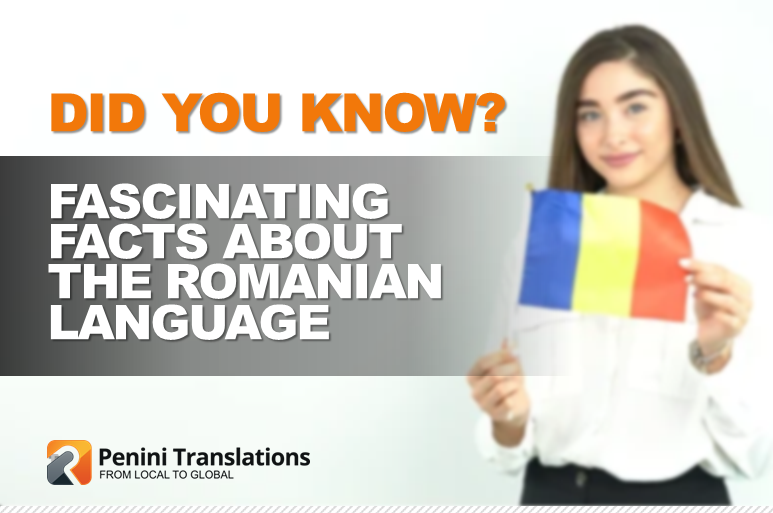Think you know everything about Romance languages? Think again. Romanian, often called the “Eastern Latin,” is full of surprises. Despite sharing roots with languages like French, Spanish, and Italian, Romanian has carved its own identity, shaped by centuries of cultural exchange and historical evolution. For Multi-Language Vendors (MLVs), this distinctiveness makes Romanian both a fascinating challenge and a rewarding addition to any language portfolio. Dive into these intriguing facts about Romanian—you might discover something you never expected!
1. Romanian is a Romance Language with a Twist
Unlike its Western counterparts, Romanian exists in a sea of Slavic languages, yet it remains firmly rooted in Latin. It’s the only Romance language in Eastern Europe, retaining a close connection to Italian and Spanish while integrating vocabulary and sounds from Slavic, Hungarian, Turkish, and Greek influences.
This linguistic blend creates a unique rhythm and vocabulary that makes Romanian both familiar and distinctly different, especially for Romance language speakers. For example, the Romanian word for “window,” fereastră, stems from Latin, while mulțumesc (“thank you”) has Slavic roots.
2. It’s the Official Language of Two Countries
Romanian is not only the official language of Romania but also of Moldova, where it is often referred to as Moldovan. Together, these countries represent a significant population of over 24 million Romanian speakers. For MLVs, this opens opportunities for projects spanning legal, cultural, and technical domains across borders.
3. Romanian’s Love for Diacritics
Romanian has five unique letters with diacritics: ă, â, î, ș, and ț. These aren’t just decorative but essential to meaning and pronunciation. For instance, țară means “country,” while tara (without the diacritic) has an entirely different meaning. Accurate use of diacritics is crucial in translations to preserve the integrity of the text.
4. Neuter Gender: A Rare Romance Feature
Romanian retains the neuter gender, a grammatical feature that disappeared in most other Romance languages. Neuter nouns behave like masculine nouns in the singular and feminine in the plural, adding complexity for linguists working with the language. This quirk makes Romanian grammatically unique among its Romance siblings.
5. Idioms: Windows into Romanian Culture
Romanian is a language rich in idiomatic expressions that reflect its history and values. Translating these into other languages often requires creativity to retain their cultural essence. Here are a few examples:
- A căuta acul în carul cu fân – “To look for a needle in a haystack.”
- Fiecare pasăre pe limba ei piere – “Every bird dies on its own tongue,” meaning that people suffer the consequences of their actions.
- Apa trece, pietrele rămân – “The water flows, but the stones remain,” symbolizing resilience.
6. A Language of the Diaspora
Romanian is spoken by millions outside Romania and Moldova, with significant communities in countries like Italy, Spain, the United States, and Canada. This global presence drives demand for translation services, particularly for legal, business, and immigration-related materials.
7. The Oldest Romanian Text Dates Back to 1521
The earliest known written text in Romanian, Neacșu’s Letter, was penned in 1521. At that time, Romanian used the Cyrillic alphabet, which was gradually replaced by the Latin script in the 19th century. This historical evolution highlights the language’s dynamic history and adaptability.
8. A Vocabulary of Many Influences
Romanian vocabulary is predominantly Latin-based, yet it incorporates words from Slavic, Turkish, Greek, and Hungarian. For instance, bucătărie (“kitchen”) comes from Slavic, while baclava (“baklava”) reflects Turkish influence. This eclectic mix gives Romanian its unique character and charm.
9. A Growing Need for Localization
Romania’s economy is thriving, particularly in industries like IT, healthcare, and tourism. This growth has increased demand for localized content that resonates with Romanian speakers. For MLVs, understanding the cultural and linguistic nuances of Romanian is key to delivering high-quality translations that meet this demand.
A Language Worth Exploring
Romanian’s rich history, unique grammar, and cultural significance make it a standout language in Europe. For MLVs, diving into Romanian means more than just expanding a language portfolio—it’s about connecting with a market that values authenticity and precision.
By embracing the challenges and rewards of Romanian, MLVs can build stronger client relationships and deliver work that bridges cultural and linguistic divides. After all, every language tells a story, and Romanian’s story is one worth telling.
Interested in having a local partner for Romanian translation services?
At Penini Translations, we work closely with MLVs in Europe and U.S. covering over 40 languages with native, certified translators, specialised in 30 industry fields.
Contact us:
by e-mail: office@peniniglobal.com
by telephone: 0040720825462
Follow us:
LinkedIn www.linkedin.com/company/penini-translations
Instagram www.instagram.com/penini_translations/
Facebook www.facebook.com/peniniglobal/




